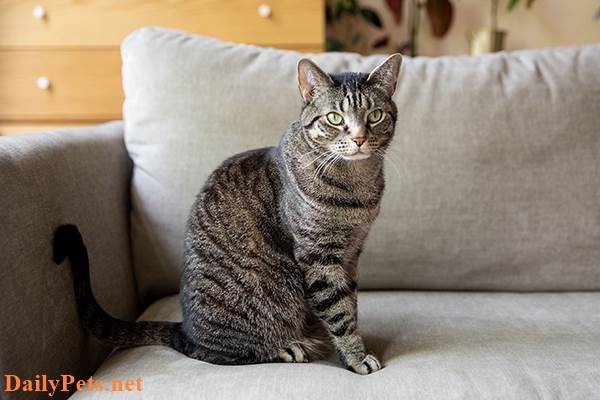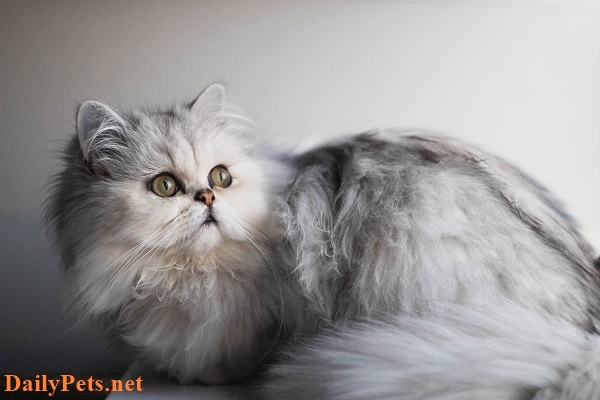If you intend to raise this cat breed, do not ignore this article on DailyPets.net.
Learn about the Himalayan cat breed
Origin of Himalayan cats
The Himalayan cat is also known as a purebred Himalayan Persian cat originating from England and America. They result from the “love” between Siamese and Persian cats, which was researched in 1931 by breeders Virginia Cobb and Clyde Keeler of Harvard University.
Until 1957, this cat had to undergo rigorous selection rounds from the CFA Association. Although qualified to become an official cat breed, some other organizations worldwide, such as ACFA, TCA, and AACE, have not yet recognized them as a Persian cat breed.
Even so, Himalayan cats still win the hearts of pet enthusiasts. Compared to Russian or Exotic cats, this cat has a more modest appearance with a height of only 25 – 30cm.

Himalayan cat breed.
In addition, the short legs combined with the short neck and round head give Himalayan cats such a special charm that you can hardly take your eyes off them.
Classification of Himalayan cats
If you take a quick look, you will see that most Himalayan cats are similar. However, it was discovered that there are two species of Himalayan cats. Their difference lies in the nose structure. These are the flat-nosed Himalayan and the snub-nosed Himalayan cat. Therefore, the respiratory capacity of each type of cat will also vary.
Popular Himalayan cat coat colors
Himalayan cats have quite a variety of coat colors. Although not possessing a shiny coat like other cat breeds, the Himalayan cat’s fur is as soft as cotton.

The Himalayan cat’s coat color is mainly white or cream. In particular, dark fur streaks such as dark brown, brown, dark green, red, spotted brown, … are often dotted on the cat’s ears, legs, paws, tail, and face. These colors throughout the body of the Himalayan cat are always harmonious and balanced.
Himalayan cat physical characteristics
The Himalayan cat breed has a rather stout and short body weighing 3-6kg. However, their body is firm and supple, not sluggish like some other cat breeds. This is considered a standard weight for cats and is not considered overweight.
The two eyes of the Himalayan cat are a large, round, and dark blue that look very special. With these eyes, you just want to “pet” them as soon as they make eye contact. In addition, the upturned flat nose combined with the short small muzzle makes the Himalayan cat look more impressive.
In addition, their ears are always erect to listen and be alert to everything around them. The long tail with many feathers fluttered like a reed swaying in the wind.
Himalayan cat personality traits
When young, Himalayan cats are very mischievous. However, they tend to be quiet and gentle in adulthood. Himalayan cats are quite independent by nature but always want to cuddle and coddle. They love to be petted, petted, and held in their lap.

It is funny that these cats are sensitive gentlemen/ladies. When teased for too long, they often do not overreact, such as scratching or biting, but quietly avoid a quiet place. If you want to get close to Himalayan cats, slowly approach and show love. Over time, they will feel and respond with extremely deep affection.
Reasons to adopt a Himalayan cat
Himalayan cats are easy to adapt to and make you comfortable sharing the house. With a gentle, friendly, and delicate nature, this cat will help you reduce stress and fatigue after every work or unhappy situation.
How to take care of a Himalayan cat
Himalayan cat food
Most Himalayan cat food is fresh or dried. Either way, the cat’s diet must still contain protein, vitamins, fiber, etc. If possible, you can buy functional foods for cats.
Do not feed your cat fermented foods, pork, cow’s milk, chocolate, etc. Besides you can also see more information on cat dietary guidelines from the Association of Officials US food control.
Diet of Himalayan cats by stage
Diet for Himalayan cats from birth to 12 months old
This is the stage where the cat’s digestive system is developing. Therefore, you should take good care of them to avoid diarrhea. Kittens under 1 month should only be breastfed or use the specialized formula for kittens. You can start feeding your cat immediately when you reach 4-5 weeks old. You should divide it into many meals and feed the cat 5 to 6 times/day. At this stage, you need to choose foods with high water content for the cat’s body to develop better.
Diet for adult Himalayan cats
As an adult, Himalayan cats need a nutritious diet. You can refer to an adult cat diet with an average weight of about 250 calories/day to maintain stable health. Because cats rarely drink water, you should consider the amount of water to add to cat food daily. The cat will be susceptible to urinary tract disorders if only dry food is used.
How to care for and hygiene for Himalayan cats
To keep the Himalayan cat’s coat clean and smooth, groom and bathe them regularly. Note you should choose a gentle, specialized shampoo for cats to avoid shedding or discoloring. Plus, you can take them to the spa for more professional care.
Himalayan cats’ eyes are often watery. Therefore, you need to clean the eye area carefully not to affect the cat’s eyesight. You should use a clean damp towel every day, then gently wipe areas such as eyes, nose, chin, ears, etc., to avoid dirt clinging to the cat.
Common Himalayan cat health problems
For the most part, Himalayan cats are quite weak. Due to the constricted nasal structure, getting some diseases, such as respiratory diseases, is easy. In addition, their eyes are often watery, which can easily lead to symptoms such as pink eye, pinched eyelashes, or retinal atrophy. In addition, Himalayan Persian cats are prone to polycystic kidney disease and some skin diseases such as tinea pedis, dermatitis, …
Notes when taking care of Himalayan cats
When raising a Himalayan cat, you need to pay attention to taking the cat for regular vaccinations. Cat vaccines are divided into two categories:
- The type to be injected (considered important for all cat breeds).
- Type should be injected (inject for cats based on lifestyle, age, medical history, environment, …).
- At the same time, you should note the correct diet for cats. Cooked foods are 80% safer than raw foods. For more peace of mind, consult your veterinarian for a standard and nutritious menu for your pet.
Note when buying Himalayan cats
Because the price of Himalayan cats is quite high, you should choose reputable places to be assured of their pedigree, purity, and health. In addition to the initial purchase cost, you must pay many other costs, including care, food, examination, toys, snacks, …





